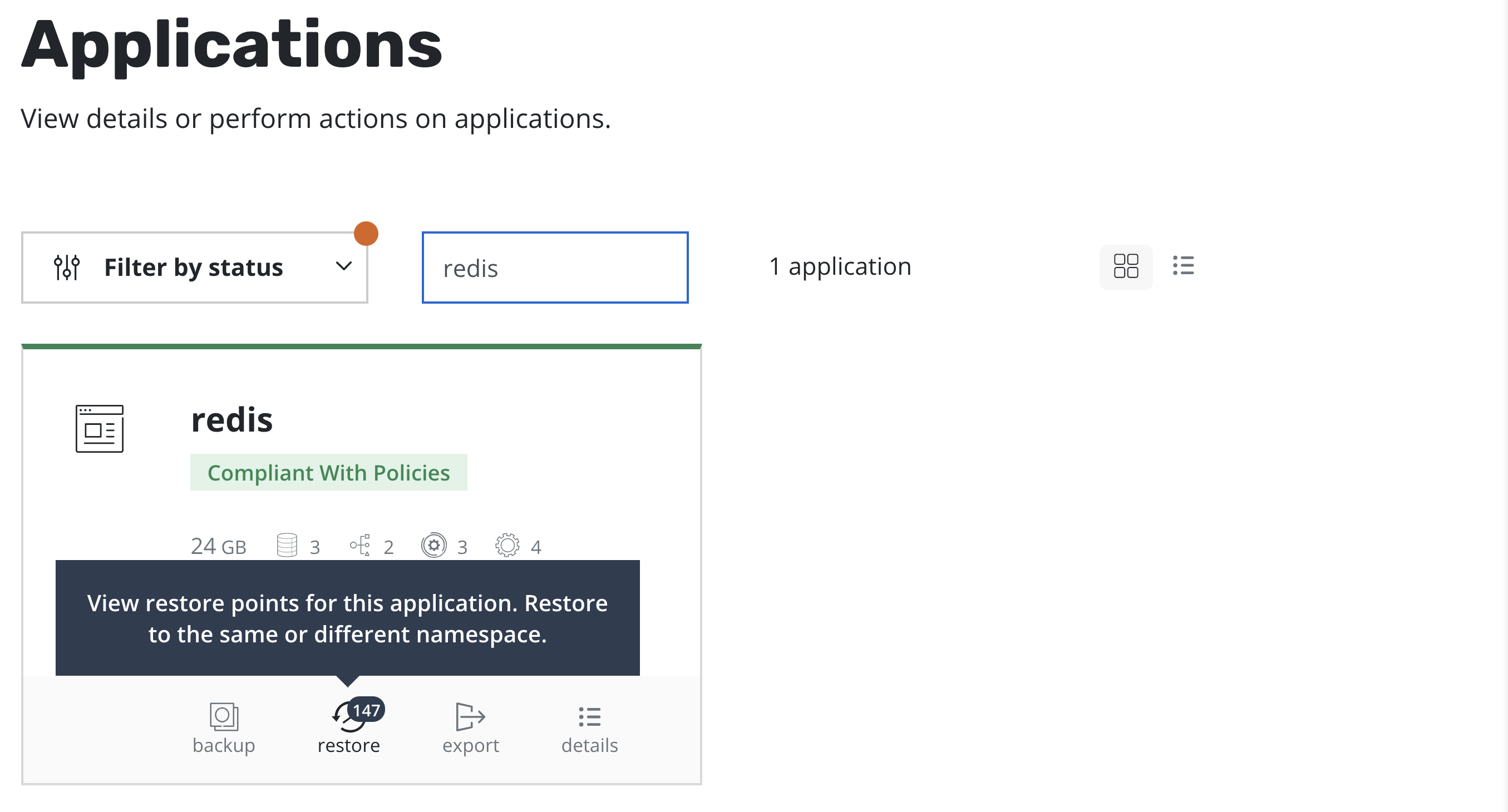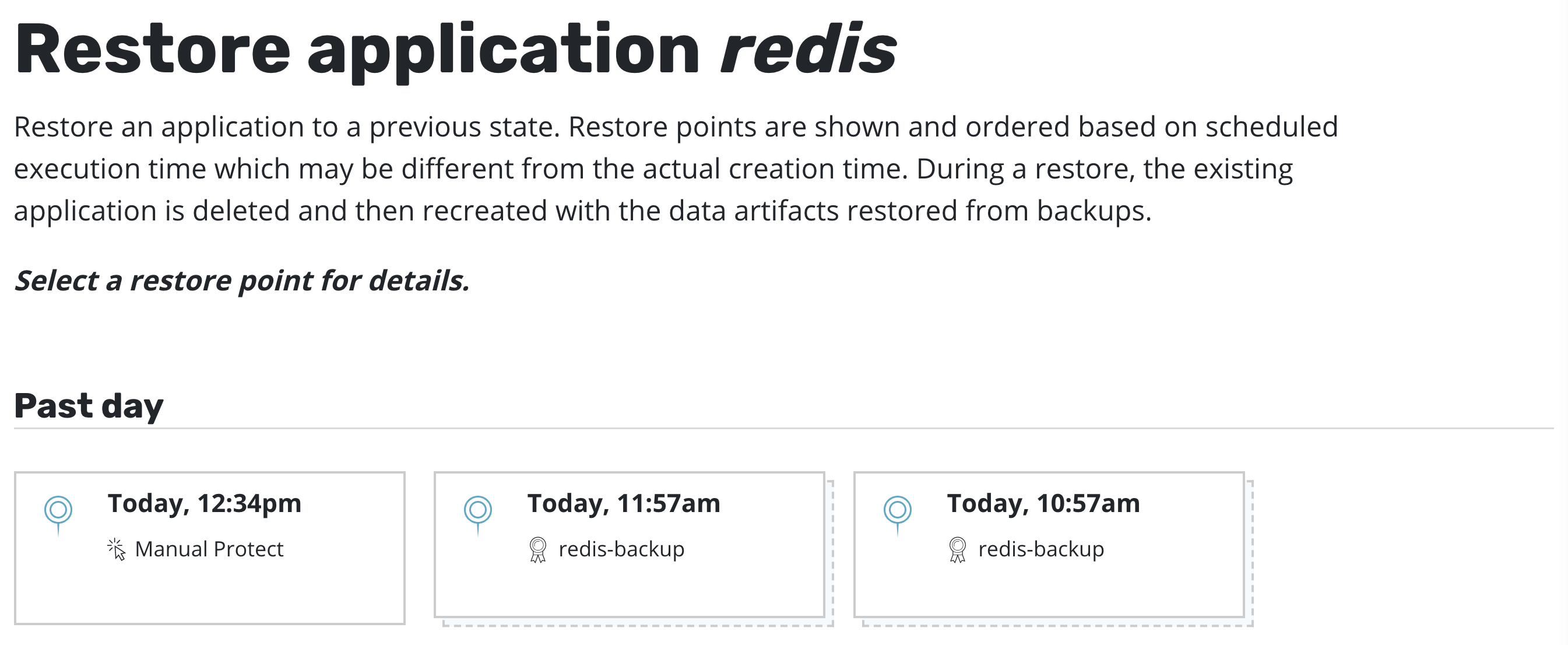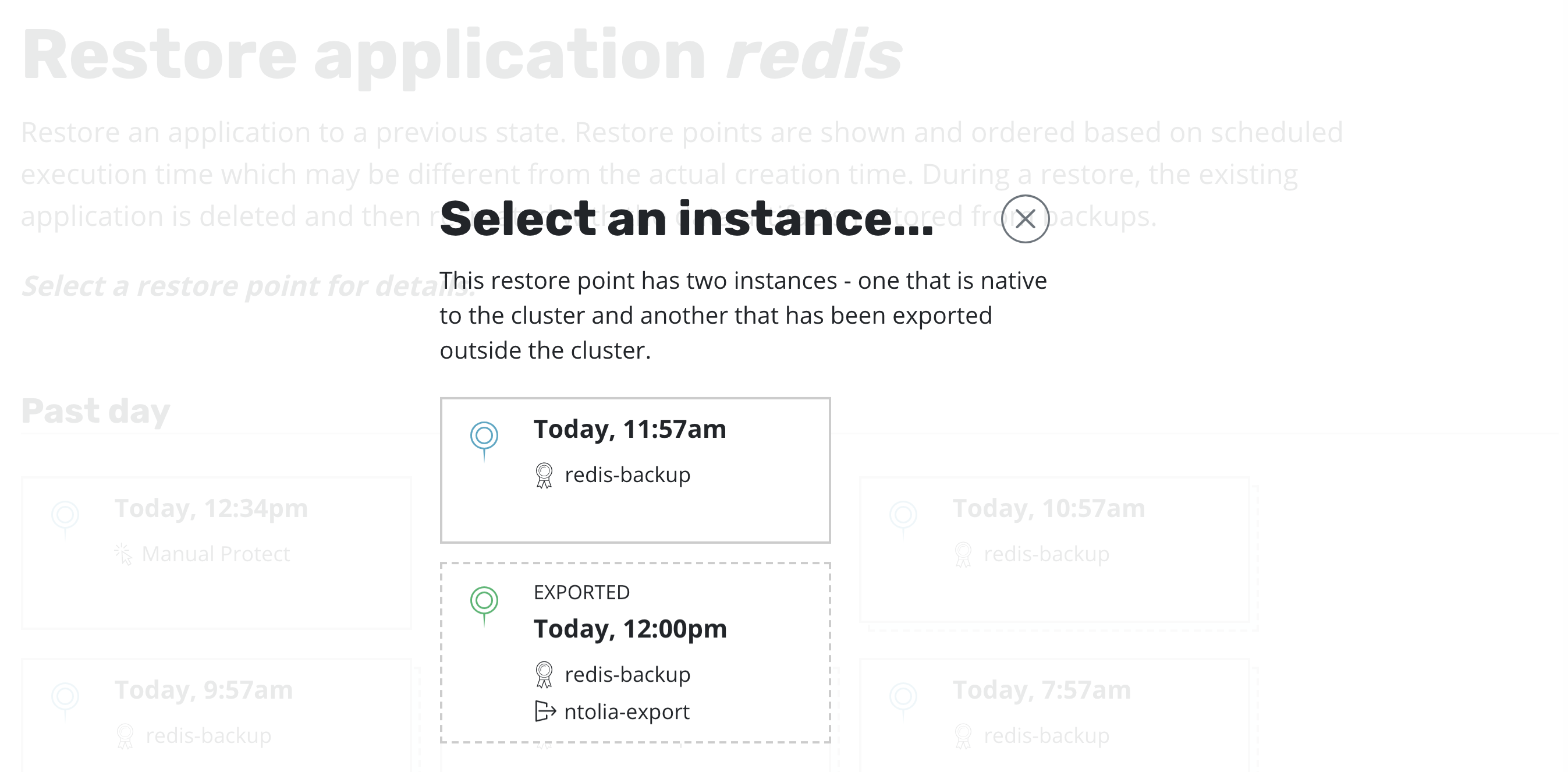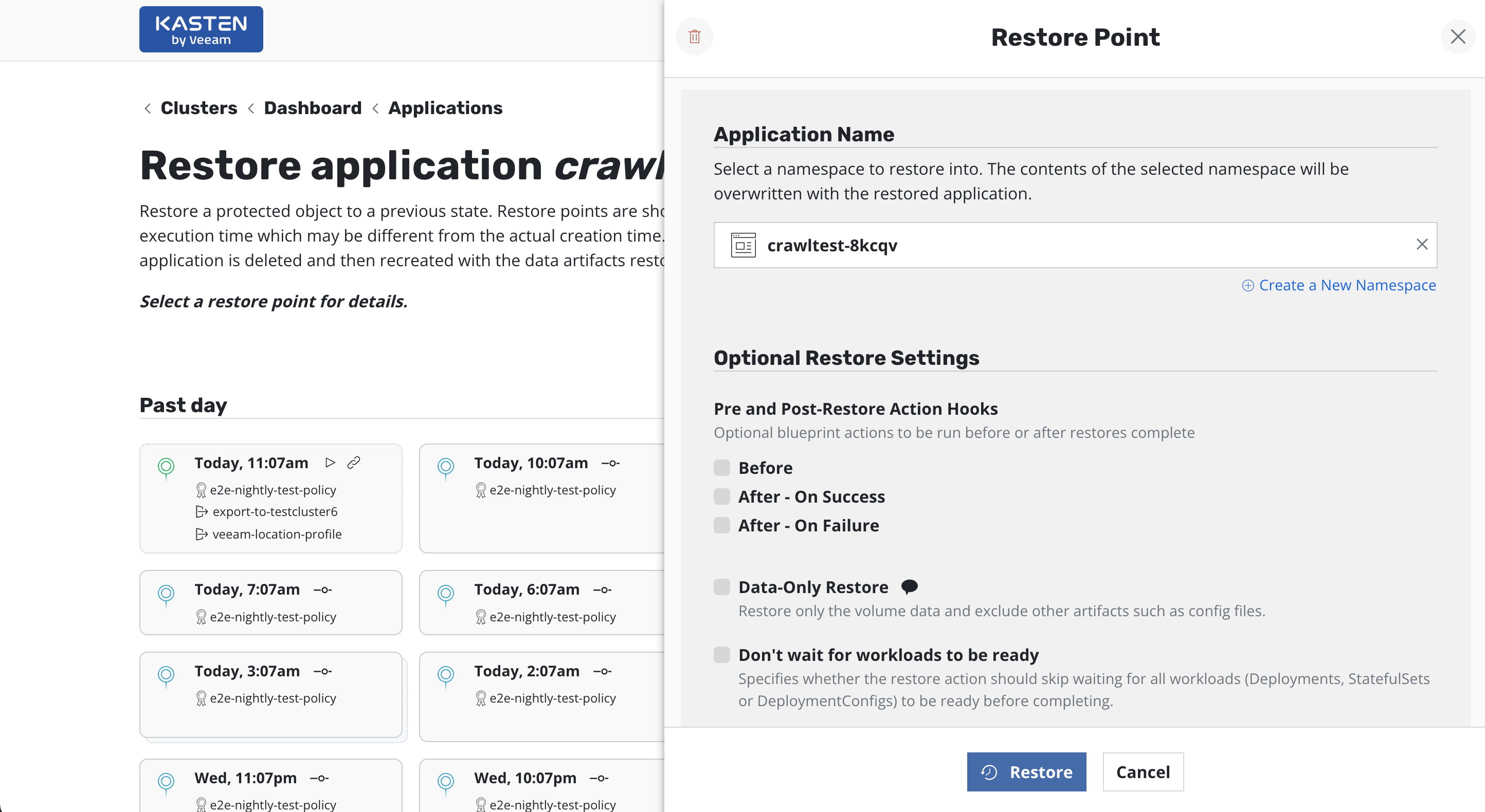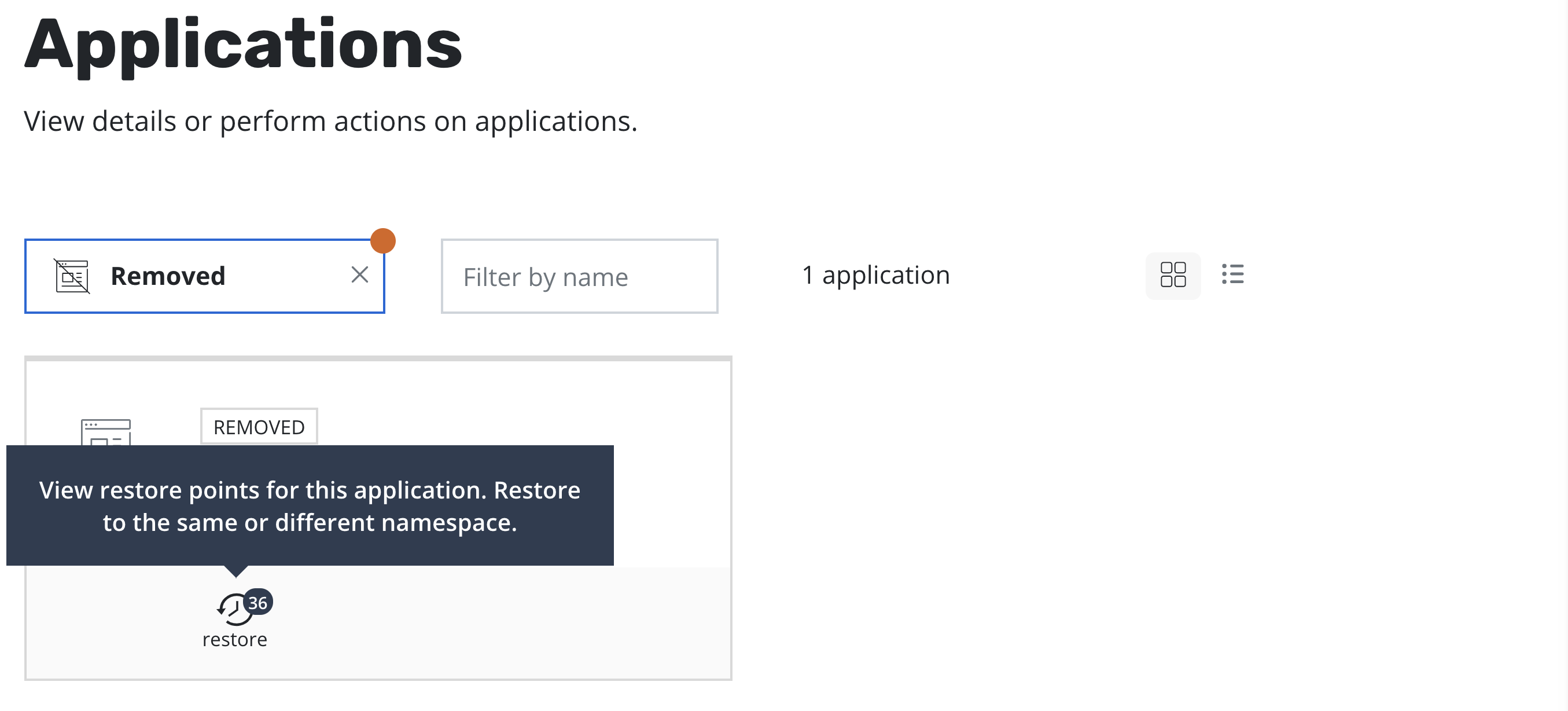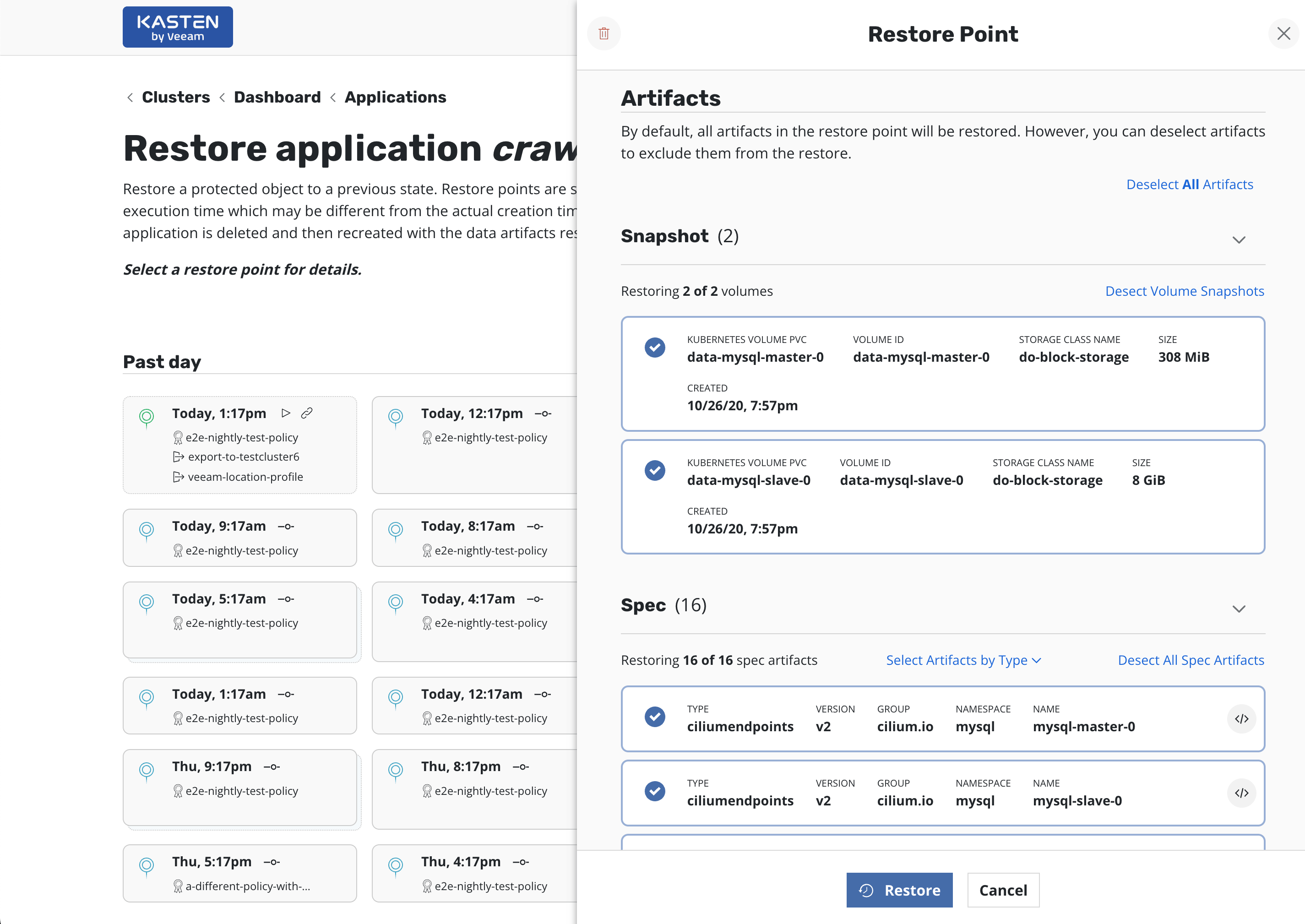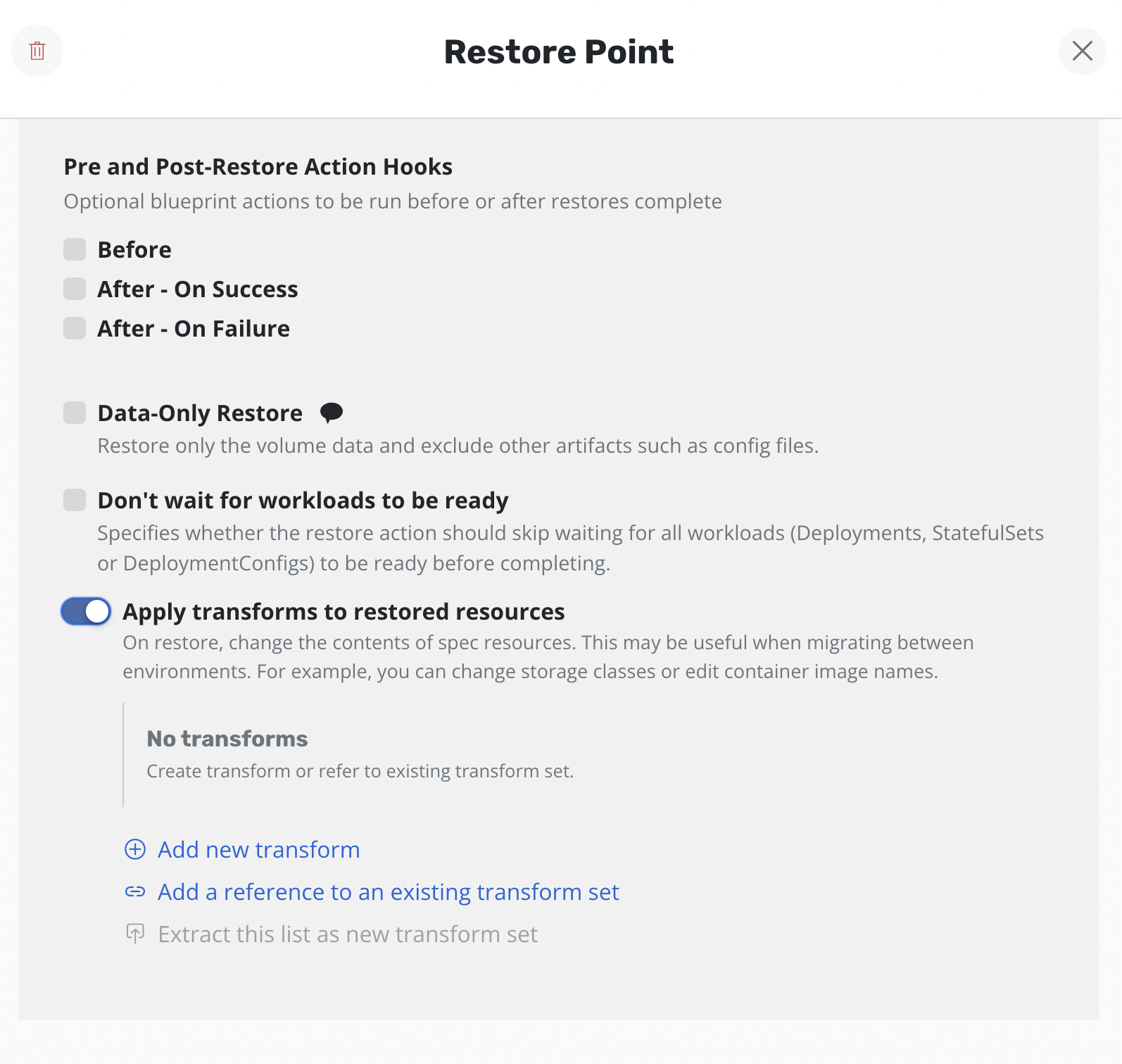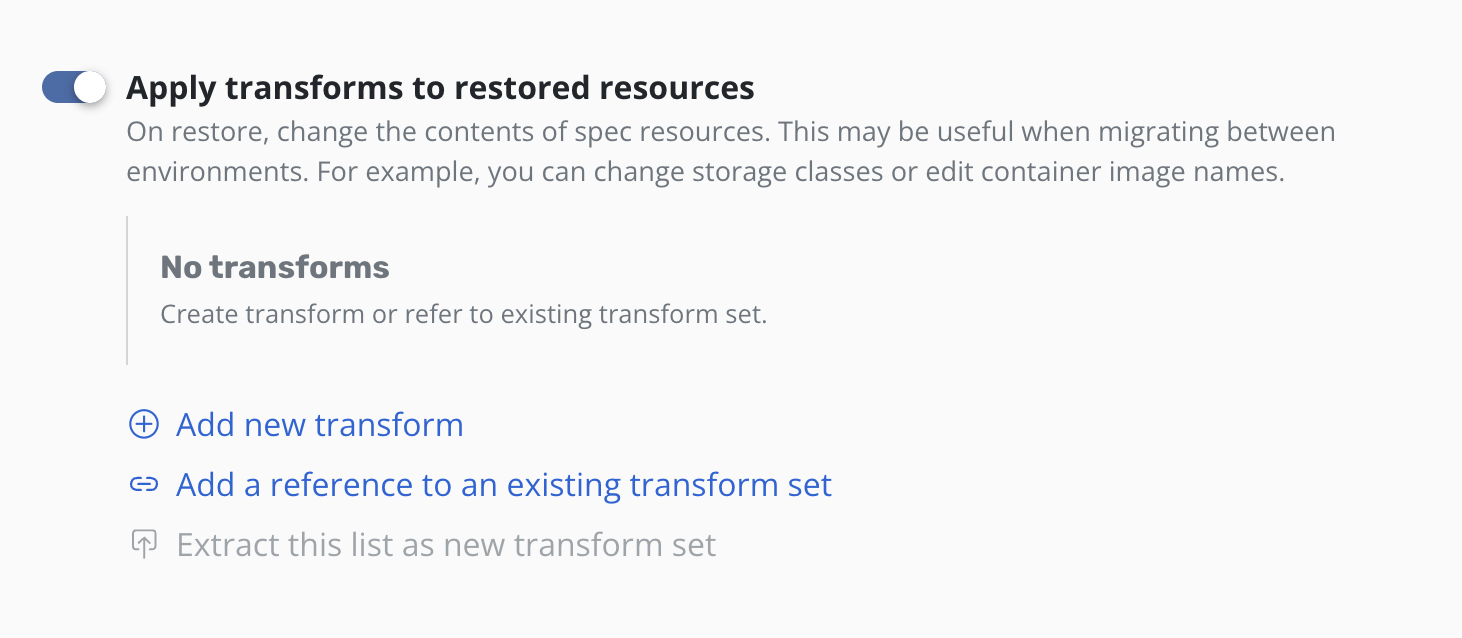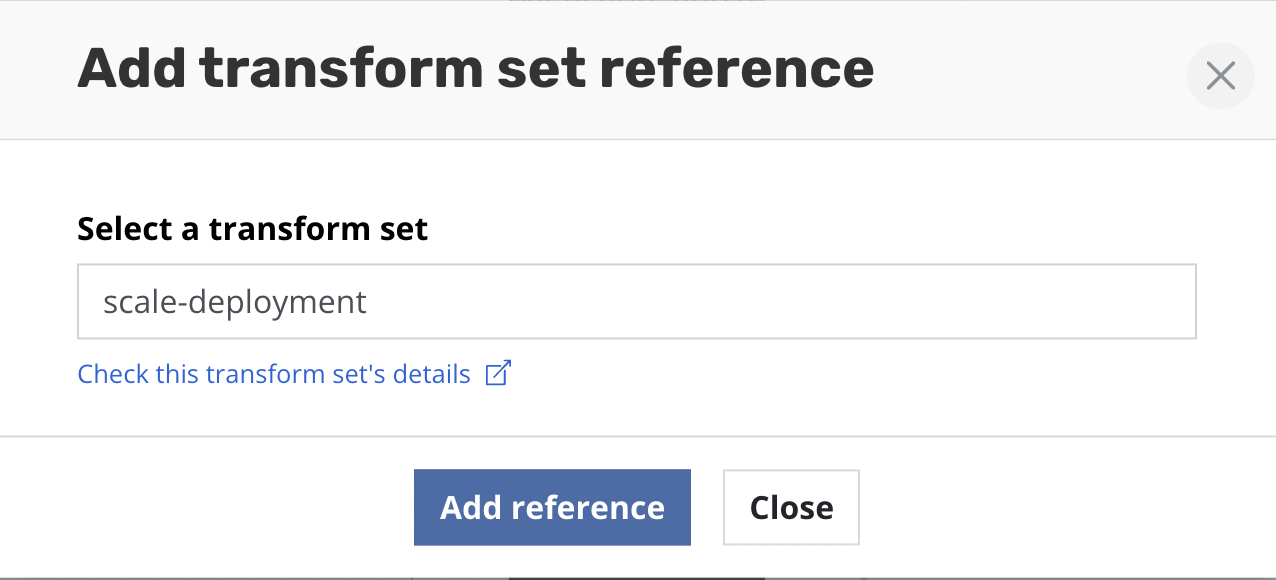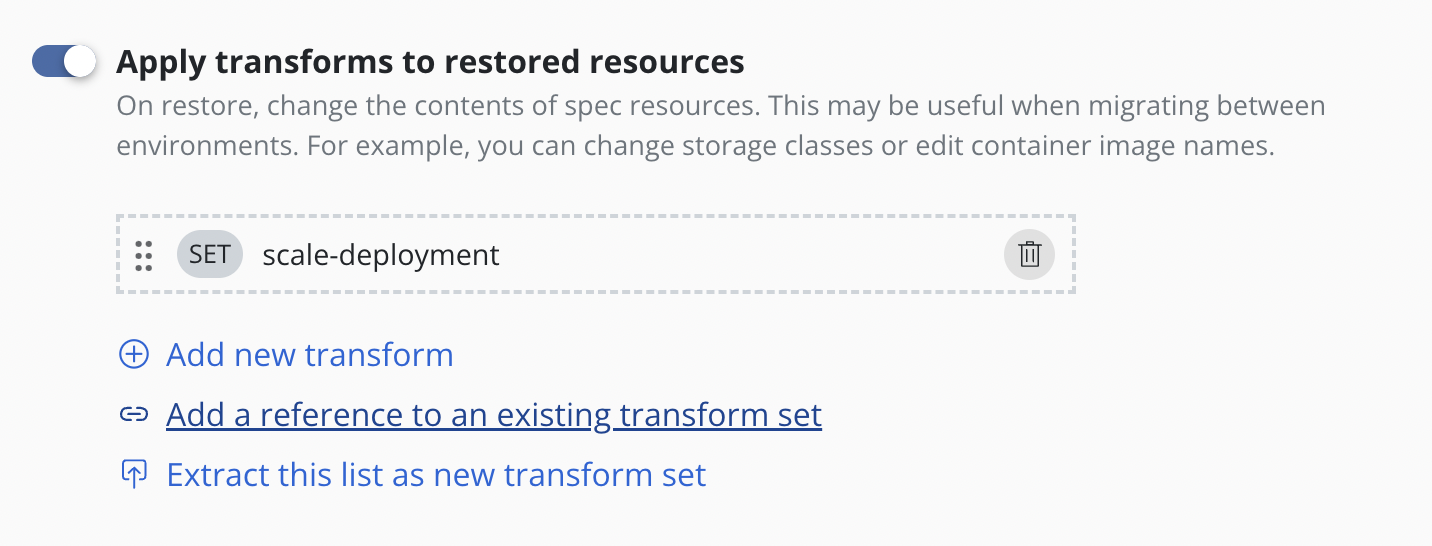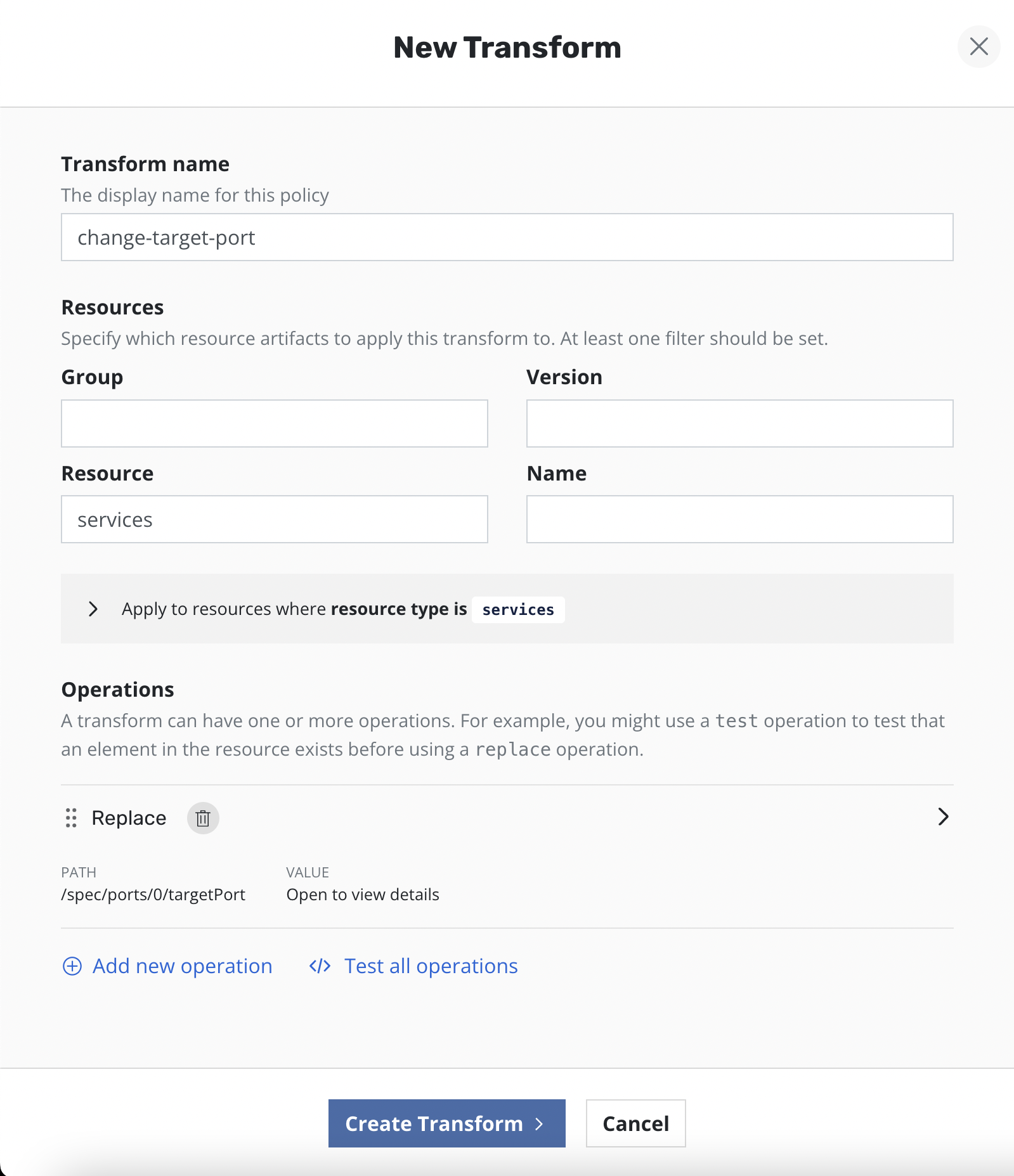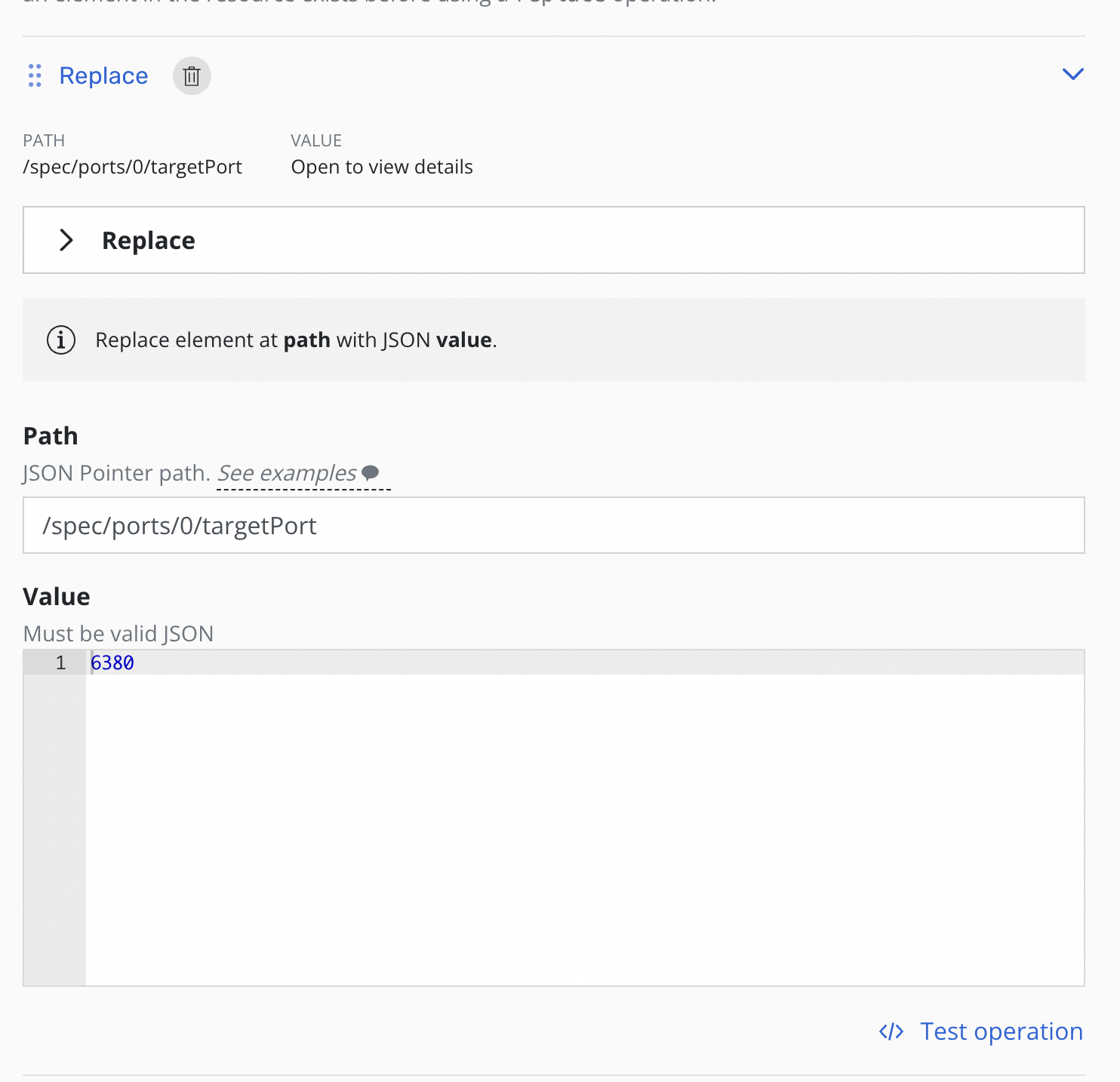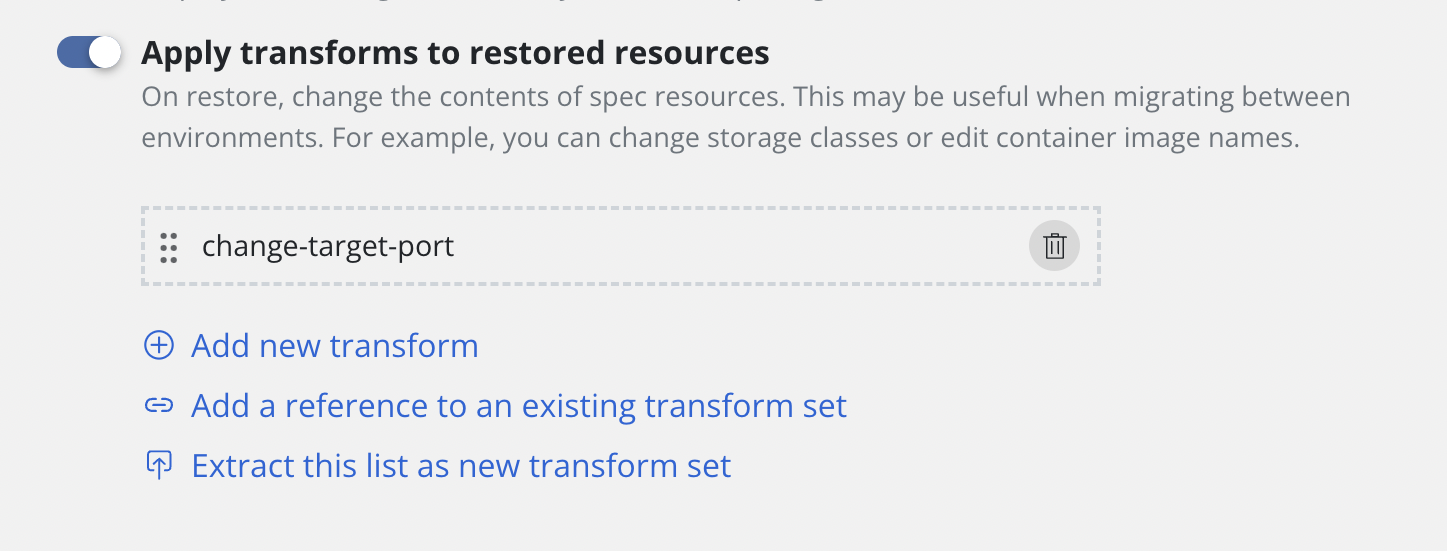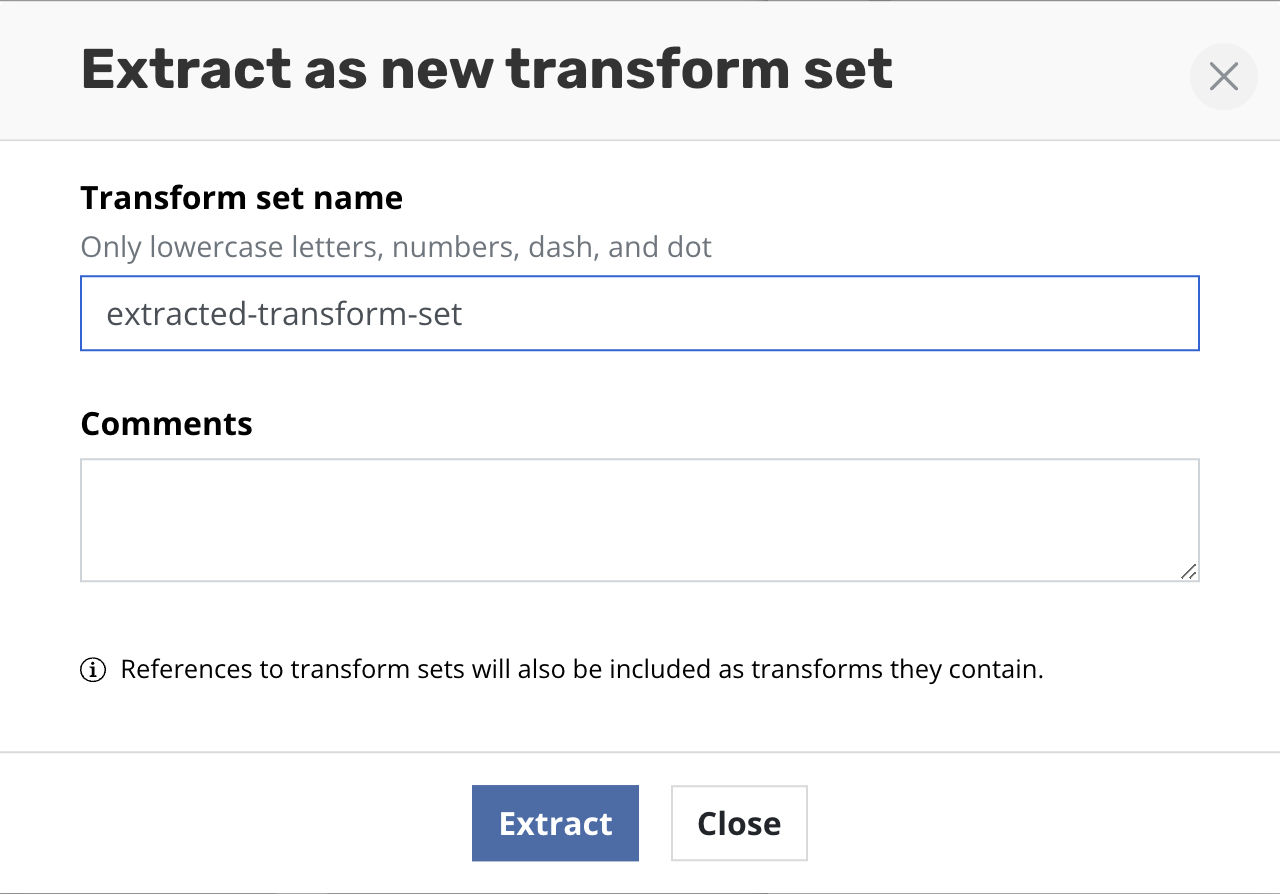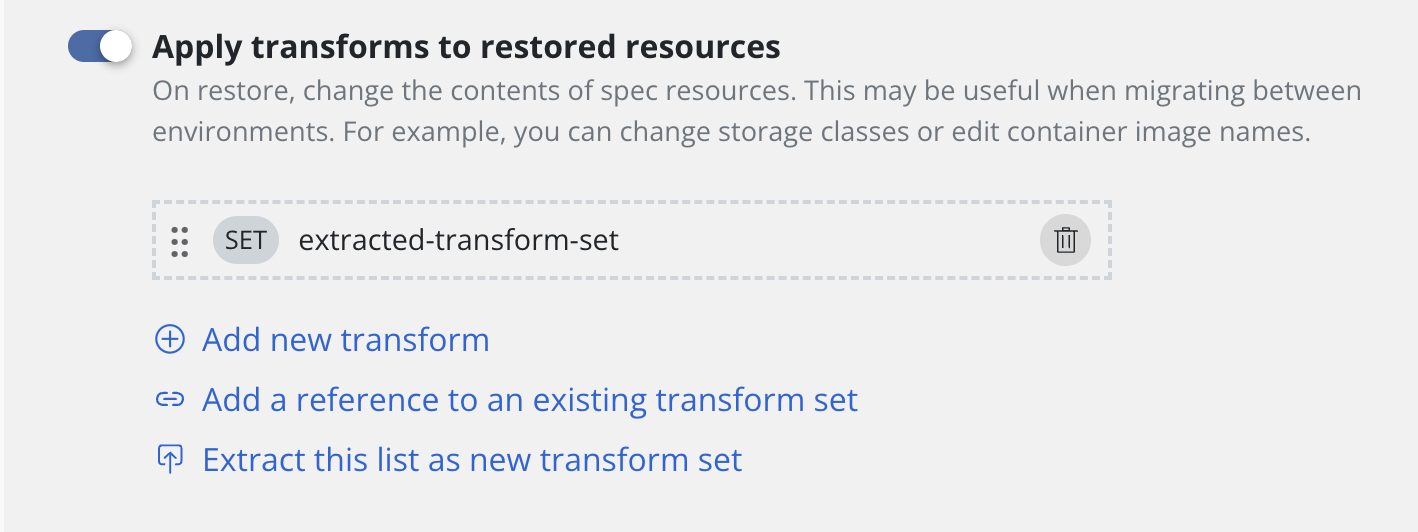Restoring Applications
Once applications have been protected via a policy or a manual action, it is possible to restore them in-place or clone them into a different namespace.
Restore Overview
Note
Restore can take a few minutes as this depends on the amount of data captured by the restore point. The restore time is usually dependent on the speed of the underlying storage infrastructure as times are dominated by how long it takes to rehydrate captured data followed by recreating the application containers.
Restoring Existing Applications
Restoring an application is accomplished via the Applications page.
One needs to simply click the Restore icon.
Note
While the UI uses the Export term for backups, no
Import policy is needed to restore from a backup. Import
policies are only needed when you want to restore the application
into a different cluster.
At that point, one has the option to pick a restore point, a grouped collection of data artifacts belonging to the application, to restore from. As seen above, this view distinguishes manually generated restore points from automated policy-generated ones.
It also distinguishes between snapshots and backups. When both are present, as seen above, a layered box is shown to indicate more than one kind of restore point is present for the same data. If you want to restore a version of the application stack, clicking on the layered restore point will present the below option to select between the local snapshot and exported backup.
Selecting a restore point will bring up a side-panel containing more details on the restore point for you to preview, if needed, before you initiate an application restore.
Warning
Currently, K10 will not restore Kubernetes objects (e.g., ConfigMaps or Secrets) that already exist (it will always replace volumes if part of the restore point). This behavior will change in an upcoming release to always overwrite namespaced resources but only create global/non-namespaced resources if they don't exist and to not overwrite them if they already exist.
Once you click Restore Application, the system will automatically
recreate the entire application stack into the selected
namespace. This not only includes the data associated with the
original application but also the versioned container images.
After the restore completes, you will be able to go back to your application and verify that the state was restored to what existed at the time the restore point was obtained.
Restoring Deleted Applications
The process of restoring a deleted application is nearly identical to
the above process. The only difference is that, by default, removed
applications are not shown on the Applications page. To discover them,
you simply need to filter and select Removed.
Once the filter is in effect, you will see applications that K10 has previously protected but no longer exist. These can now be restored using the normal restore workflow.
Limitations
Changing the name of a PersistentVolumeClaim resource (PVC) on restore via transform is not supported.
Currently, K10 only supports
Allowed Topologiesconsisting of a single zone. If more that one zone is provided, K10 will choose the first one.Changing the size of a PersistentVolumeClaim resource (PVC) on restore via transform is not supported.
A resource's owner references will not be preserved if a transform changes the name of the resource to an auto-generated name (generatedName).
Restore Filtering
By default, a restore will bring back all artifacts and data captured during the backup process. However, there are times where only a subset of these artifacts are required and, to support that use case, the restore workflow supports two distinct filtering options.
Artifact Filtering: Full-control over what artifacts and data to restore
Data-Only Restore: Data-only restore (usually for a running application)
Artifact Filtering
As seen in the above diagram, it is possible to selectively bring back restore point artifacts (including volume snapshots). This is useful for scenarios such as single PVC restore or rolling back configuration updates. By default, all artifacts are selected for restore.
Note
To preserve owner references, both the resource and its owners must be included by the filters.
Data-Only Restore
As seen in the above sections, it is also possible to select a
Data-Only Restore. While, at the surface level, this is similar to
just selecting all volume snapshots and no Kubernetes specs, there are
a number of safety guardrails for successful data-only restores. The
important differences to be aware of include:
The Kubernetes workloads (Deployments, StatefulSets, etc.) captured in the restore point must exist in the namespace the application is being restored in
The running Kubernetes workloads must have the same number of replicas as captured in the restore point
The Kubernetes workloads must also have same volumes as were gathered in the restore point (number of volumes, names of the volumes)
These guardrails are in place as data-only restore is frequently used to bring older versions of data into a newer version of application code. In those scenarios, these checks are essential to ensure that a successful restore can be completed.
Note
Data-Only Restore follows delete and restore from backup approach for the PVCs to maintain data integrity.
Resource Transformation
By default, K10 restores Kubernetes resources as they exist in the restore point. However, there are times when the restore target does not match the environment of the backup. For these situations, K10 allows Kubernetes resource artifacts to be transformed on restore.
For example, if a restore point was created in one cloud provider and it should be restored into a cluster in a different cloud provider, it might be necessary to use a transform that updates the container image URLs in some resources, or one that changes storage class settings.
To apply transforms to the restored application, enable
Apply transforms to restored resources under Restore After Import.
Add transforms using transform sets
A complete guide of how to setup a transform set can be found here.
Clicking the Add a reference to an existing transform set will open a
form for selecting a transform set.
Type the name of the transform set and click Add reference.
A reference to the transform set will then be added to the form.
The SET label helps identify transforms which are stored and
referenced rather than those that are created inline via
Add new transform.
Add new custom transform
A complete specification of how transforms can be configured can be found here.
Clicking the Add new transform will open a form for creating a new
transform.
On the form, name the transform, select which resources the transform will be applied to, and then create one or more operations.
Each operation will have its own panel allowing customization and testing of the selected operation.
Operations can be tested against any resources to verify the outcome of the operations. The ability to apply transforms will provide flexibility in migration workflows between environments where more than just a like for like recovery is needed.
Extract transforms as transform set to reuse them
To make a transform set from a sequence of transforms already defined
click Extract this list as new transform set.
Type the name of new transform set and, optionally, its description.
Click Create transform set. After successful creation all transforms
will be replaced with the reference of the created transform set.
Cloning Applications
By default, K10 restores applications into the original namespace the restore point was created from. However, as the above image shows, the target namespace can be changed and new namespaces can be created at this point. In particular, this functionality can be used to extract only a few files or subset of the originally gathered data with requiring a complete rollback of the primary application. Other use cases include debugging and test/dev purposes or for cloning.
Using an Alternate Location Profile
An exported restore point can be selected to restore an application from a location outside the cluster. By default, it is assumed that the restore point exists at the location it was originally exported to. However, the "Alternate Location Profile" option can be used to select a different location profile to restore from. This can be useful if, for example, restore points have been copied or moved to a different location.
